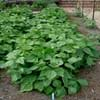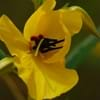Life Span
Annual
Perennial
Type
Vegetable
Bulb or Corm or Tuber
Origin
Central America, South America
Not Available
Types
Bush Beans, Pole Beans
Not available
Number of Varieties
Not Available
Habitat
Cultivated Beds
subtropical regions, Temperate Regions
USDA Hardiness Zone
Not Available
4-8
AHS Heat Zone
Not Available
12-1
Sunset Zone
A1, A2, A3, H1, H2, 1a, 1b, 2a, 2b, 3a, 3b, 4, 5, 6, 7, 8, 9, 10, 11, 12, 13, 14, 15, 16, 17, 18, 19, 20, 21, 22, 23, 24
21,22
Habit
Vining/Climbing
Upright/Erect
Flower Color
Lavender
Gold, Pink
Flower Color Modifier
Bicolor
Bicolor
Fruit Color
Purple
Green, Brown
Leaf Color in Spring
Green, Purple
Green, Dark Green
Leaf Color in Summer
Green
Light Green
Leaf Color in Fall
Green
Several shades of Green
Leaf Color in Winter
Not Available
Light Green
Leaf Shape
Oval
Lanceolate
Plant Season
Spring, Summer, Fall
Spring, Summer
Sunlight
Full Sun
Full Sun, Partial Sun
Type of Soil
Loam, Sand
Clay, Loam, Sand
The pH of Soil
Neutral, Alkaline
Acidic, Neutral
Soil Drainage
Well drained
Well drained
Bloom Time
Indeterminate
Early Summer, Summer
Tolerances
Drought
Drought
Where to Plant?
Container, Ground, Pot
Ground, Pot
How to Plant?
Seedlings
Bulbs
Plant Maintenance
Medium
Medium
Watering Requirements
Do Not over Water, Requires regular watering, Water evenly
Average Water Needs
In Summer
Lots of watering
Lots of watering
In Spring
Moderate
Moderate
In Winter
Average Water
Average Water
Soil pH
Neutral, Alkaline
Acidic, Neutral
Soil Type
Loam, Sand
Clay, Loam, Sand
Soil Drainage Capacity
Well drained
Well drained
Sun Exposure
Full Sun
Full Sun, Partial Sun
Pruning
Remove damaged leaves, Remove dead branches, Remove dead leaves
Remove damaged leaves, Remove dead branches, Remove dead leaves
Fertilizers
5-10-10 fertilizer
All-Purpose Liquid Fertilizer
Pests and Diseases
Alternaria Leaf Spot, Anthracnose, Aphids, Armyworm, Bacterial Blight
Red blotch
Plant Tolerance
Drought
Drought
Flower Petal Number
Single
Single
Foliage Texture
Coarse
Medium
Foliage Sheen
Matte
Glossy
Attracts
Not Available
Hummingbirds
Allergy
Not Available
Not Available
Aesthetic Uses
Not Available
Beautification, Bouquets
Beauty Benefits
Beautiful Skin
Not Available
Environmental Uses
Fixes Nitrogen
Air purification
Medicinal Uses
Cancer, Diuretic, Homeopathy, Hypotensive, Miscellany
Not Available
Part of Plant Used
Leaves, Seedpod, Seeds
Flowers
Other Uses
Used for making brown dye, Used in biomass, Used in in reviving woollen fabrics
Showy Purposes
Used As Indoor Plant
Yes
No
Used As Outdoor Plant
Yes
Yes
Garden Design
Container, Edible, Herb, Vegetable, Vine
Container, Cutflower, Feature Plant, Mixed Border
Botanical Name
PHASEOLUS vulgaris 'Purple King'
LILIUM 'Ladylike'
Common Name
String bean, Field bean, French bean
Asiatic Lily, Ladylike Lily
In Hindi
String Bean
Ladylike lily
In German
Bohne
Ladylike lily
In French
Haricot vert
Ladylike lily
In Spanish
String Bean
Ladylike lily
In Greek
Αμπελοφάσουλο
Ladylike lily
In Portuguese
Feijão de corda
Ladylike lily
In Polish
Fasolka szparagowa
Ladylike lily
In Latin
Gloria Bean
Ladylike lily
Phylum
Magnoliophyta
Not Available
Class
Magnoliopsida
Liliopsida
Family
Fabaceae
Liliaceae
Clade
Angiosperms, Eudicots, Rosids
Angiosperms, Monocots
Tribe
Phaseoleae
Not Available
Subfamily
Faboideae
Not Available
Number of Species
Not Available
Difference Between String Bean and Ladylike Lily
If you are confused whether String Bean or Ladylike Lily are same, here are some features about those plants to help you choose better. Many people think that these two plants have the same characteristics, but one can see String Bean and Ladylike Lily Information and learn more about it. Fertilizers required for proper growth of String Bean are 5-10-10 fertilizer, whereas for Ladylike Lily fertilizers required are All-Purpose Liquid Fertilizer. Hence, one should know the basic difference between String Bean and Ladylike Lily if you are planning to have them in your garden to enhance its beauty.
<
Flowering PlantsImportance of String Bean and Ladylike Lily
Want to have the most appropriate plant for your garden? You might want to know the importance of String Bean and Ladylike Lily. Basically, these two plants vary in many aspects. Compare String Bean and Ladylike Lily as they differ in many characteristics such as their life, care, benefits, facts, etc. Every gardener must at least have the slightest clue about the plants he wants to plant in his garden. Compare their benefits, which differ in many ways like facts and uses. The medicinal use of String Bean is Cancer, Diuretic, Homeopathy, Hypotensive and Miscellany whereas of Ladylike Lily is Not Available. String Bean has beauty benefits as follows: Beautiful Skin while Ladylike Lily has beauty benefits as follows: Beautiful Skin.
Compare Facts of String Bean vs Ladylike Lily
How to choose the best garden plant for your garden depending upon its facts? Here garden plant comparison will help you to solve this query. Compare the facts of String Bean vs Ladylike Lily and know which one to choose. As garden plants have benefits and other uses, allergy is also a major drawback of plants for some people. Allergic reactions of String Bean are Not Available whereas of Ladylike Lily have Not Available respectively. Having a fruit bearing plant in your garden can be a plus point of your garden. String Bean has showy fruits and Ladylike Lily has no showy fruits. Also String Bean is not flowering and Ladylike Lily is not flowering . You can compare String Bean and Ladylike Lily facts and facts of other plants too.





